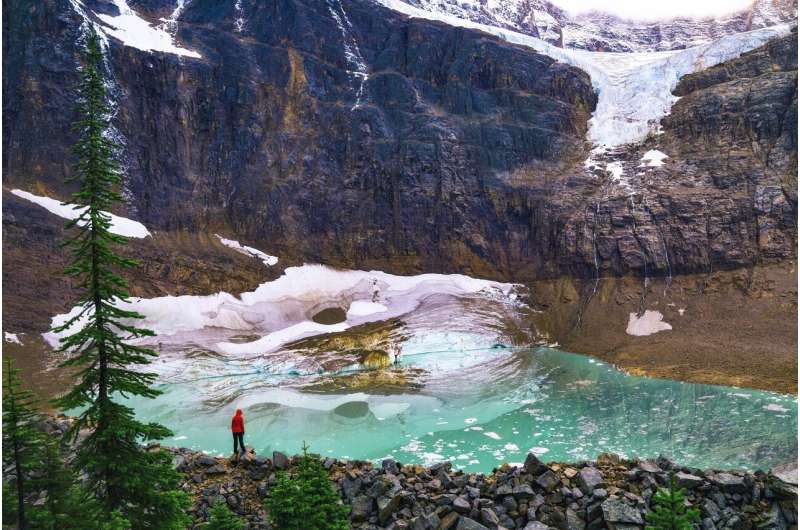This article has been reviewed according to Science X's editorial process and policies. Editors have highlighted the following attributes while ensuring the content's credibility:
fact-checked
peer-reviewed publication
trusted source
proofread
Pacific Northwest snowpack endangered by increasing spring heat waves

Even in the precipitation-heavy Pacific Northwest, more frequent heat waves are threatening a key source of water supply.
A Washington State University study that intended to look at snow melting under a single, extreme event, the 2021 "heat dome," instead revealed an alarming, longer-term rising trend of successive heat waves melting snowpack earlier in the year.
The findings have implications for many areas worldwide that are dependent on snow-capped mountains to provide summer water since heat waves have been on the rise globally.
"Short-term events like heat waves have had an under-appreciated impact on accelerating snow melt, and cumulatively, they can amplify each other," said Luke Reyes, a doctoral student in WSU's School of the Environment, and lead author of the study published in npj Climate and Atmospheric Science.
Heat domes, rare events that occur when the atmosphere traps hot ocean air, caused record temperatures nearing 122° Fahrenheit across the Pacific Northwest in late June 2021. Yet, the researchers found that by the time the dome arrived, a lot of the region's snowpack had already melted.
Their analysis of high-resolution snowpack and temperature data revealed that high-elevation snow had started melting during a series of heat waves in April, May and early June—when temperatures were 7.2 to 12.6° Fahrenheit above normal.
Even more concerning, when the researchers looked back at temperature records spanning from 1940 to 2021, they saw that these springtime heat waves have doubled in frequency, intensity or both since the mid-1990s.
"The data suggests that we don't necessarily need to be worried about a very rare event like the heat dome, but that heat waves are becoming far more prevalent and are more likely to be driving a lot of snowpack loss in the future," said co-author Marc Kramer, a WSU associate professor of environmental chemistry.
The effect of short-term heat waves on snowpack has been understudied because historically researchers looked at snowpack levels on April 1 and average monthly temperatures to estimate climate change impacts on snowpack loss. Those averages might show single-digit temperature increases but obscure the impact of heat spikes that may last just a couple days.
Also, for many years, mountainous snowpack was thought to be resilient to short-term high temperatures in spring because it remained sufficiently cold at high elevations. The WSU study revealed that this buffering capacity appears to have diminished in the face of more frequent and intense heat waves.
In 2021, the combined result of heat waves and the heat dome meant the snowpack melted about three weeks earlier than usual, with most snow cover gone by late June. Normally, snowmelt provides the Pacific Northwest with water well into August.
This extreme early melting occurred even though 2021 was a La Niña year, a global weather phenomenon that typically means a deeper snowpack. In fact, Pacific Northwest snowpack that spring was 135% of normal for the higher-elevation snow zone and its 18-year record examined by the study. By the end of June, though, that was gone.
This rapid melt does not bode well for the coming year, 2024, which is expected to have drier weather brought by El Niño.
"We have a coming El Niño year and next year, and there may be some amplification effects," said Kramer. "If we have less snow to begin with, the snowpack is going to be all that much more vulnerable to these heat anomalies earlier in the season."
The study is part of the Kramer lab's broader research into heat wave impacts on ecosystems and agriculture.
More information: Luke Reyes et al, High-elevation snowpack loss during the 2021 Pacific Northwest heat dome amplified by successive spring heatwaves, npj Climate and Atmospheric Science (2023). DOI: 10.1038/s41612-023-00521-0
Journal information: npj Climate and Atmospheric Science
Provided by Washington State University



















